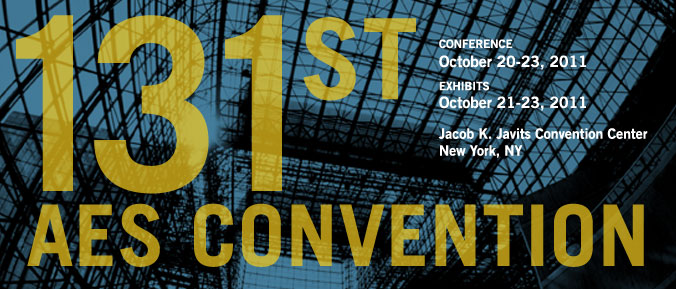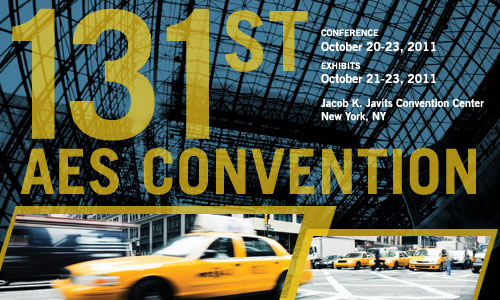
AES New York 2011
Engineering Brief EB1
EB1 - Recording/Production
Thursday, October 20, 11:00 am — 12:00 pm (Room: 1E09)
Chair:
Richard King, McGill University - Montreal, Quebec, Canada, Centre for Interdisciplinary Research in Music, Media and Technology, Montreal, Quebec, Canada
EB1-1 A New Golden Age of Recording—Thomas T. Chen, Custom Recording/Studio C
The “Golden Age” of recording is said to be in the early 1960s and consists of recordings that were made that have great natural sound that are a treat to the ear. I believe that the room is one of the major contributors to the sound of the “Golden Age” recordings. I have developed a technique for live recording producing good sound and also a means of adding quality room to multitrack recordings.
Engineering Brief 16 (Download now)
EB1-2 What Constitutes Innovation in Music Production?—Justin Paterson, London College of Music, University of West London
Innovation has often been at the core of record production, yet as production has advanced from Fred Gaisberg through the techniques of Musique Concrète to the plethora of possibilities afforded by the present digital age, the opportunities for genuine innovation might now seem limited. This notion is explored by considering the ontology of production with reference to audio examples, forming a chronological thread that highlights pieces commonly perceived as landmark innovations, their technological backdrops, and the recurrence/evolution of effect and aesthetic through successive generations of technology, and ultimately a nexus. The perception, attribution and value of “quality” is another factor, and while this is a separate subject in its own right, some discussion of this better contextualizes the topic.
Engineering Brief 17 (Download now)
EB1-3 Achieving Great Sound in the Age of Loudness Wars—Bryan Martin, Sonosphere Mastering - Montreal, Quebec, Canada; Adrian Carr, AC Mastering - Montreal, Quebec, Canada
There has been much concern and discussion about the ever increasing demand for higher and higher mix and mastering levels. Veteran mastering engineers Adrian Carr and Bryan Martin will take a new perspective to discuss techniques and processes to improve and maintain fidelity in the current “Maximum-Volume-Level” marketplace. Though this presentation is geared toward the working engineers of today, it is of particular importance to the up and coming generation. Since the level of CD’s is not decreasing, the young engineer can still be aware of the advantages he has and the pitfalls he faces.
Engineering Brief 18 (Download now)
EB1-4 Phantom Powering the Modern Condenser Microphone Part II: The Effects of Load Impedance on Microphone Performance—Mark Zaim, Audio-Technica U.S. Inc. - Stow, OH, USA
This paper builds on topics discussed in the previous AES paper “Phantom Powering the Modern Condenser Microphone: A Practical Look at Conditions for Optimized Performance.” It is not uncommon for microphone manufacturers to measure performance specifications using open load conditions. However, in application microphones are connected to mixing consoles that have much lower input impedances. These operating conditions can affect microphone performance and cause measurements to deviate from published open load conditions. During the previous investigation, changes were seen in several relevant microphone measurements as load impedance was changed. These observations prompted a more in-depth investigation into the effects of load impedance on microphone performance. The specific performance parameters investigated were: sensitivity, self-noise, current consumption, dynamic range, maximum sound pressure level (max SPL), signal to noise ratio (SNR) and frequency response.
Engineering Brief 19 (Download now)
Information Last Updated: 20111005, mei

